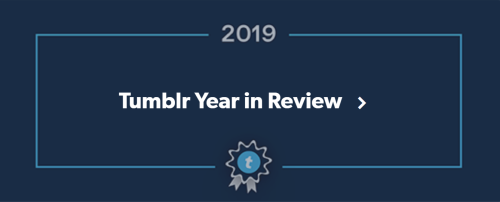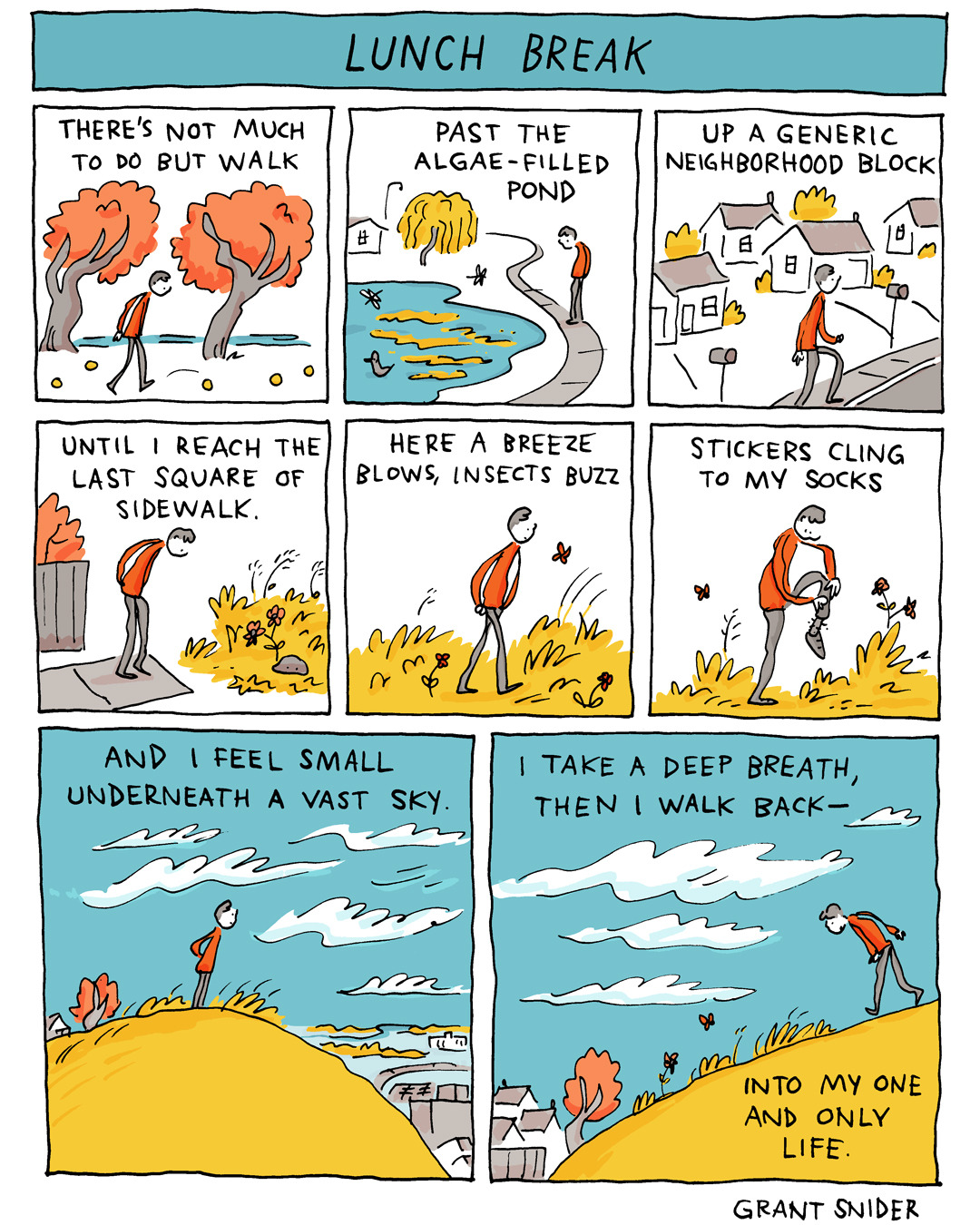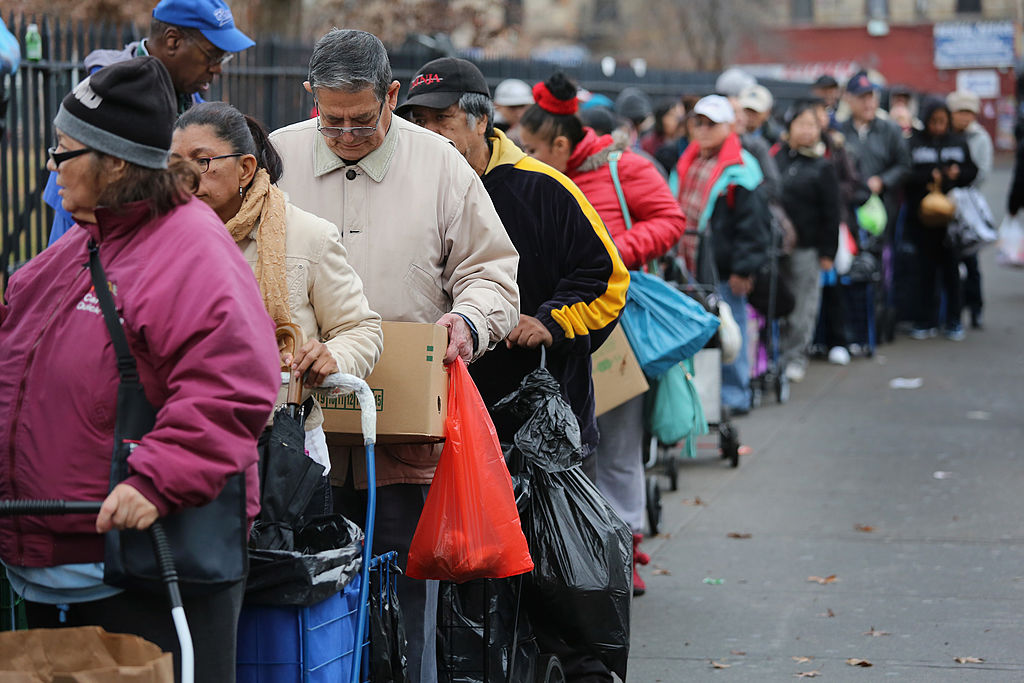Brian is telling a young Asian-American woman about the five-day workshop he’s here to attend. “It’s called ‘Bio-hacking the Language of Intimacy’,” he says. “Uh-huh,” says the Asian-American woman. She directs this less at Brian than at the kelp forest floating offshore. Brian presses on. What he particularly appreciates is the ability to talk about stuff he can’t talk about at work. Relationships and so forth. “You know,” he says, “really make that human connection.”
The Asian-American woman gives him the sort of bright, dead-eyed smile Californians deploy when they’re about to violently disagree with you. “I find I can make human connections in lots of different contexts.”
Brian goes quiet. In all but one sense it’s a typically, even touchingly American courtship ritual: the clean-cut young man, no less diffident nor deferential than his grandfather might have been; the young woman off-handedly wielding her power over him, yet to be impressed. The crucial difference is that both parties are naked – not only naked, in the woman’s case, but standing up in the water, exposing herself in full-frontal immodesty to Brian and the cool Pacific breezes.
 We are in the outdoor sulphur springs that cling to the cliffside at the Esalen Institute, a spiritual retreat centre in Big Sur, California. Here naked sharing is commonplace and as sapped of erotic charge as it would be in a naturist campsite – which is just as well, as I’m naked too, the gooseberry in the hot tub, desperately aiming for an air of easygoing self-composure as I try not to look at Brian’s thighs.
We are in the outdoor sulphur springs that cling to the cliffside at the Esalen Institute, a spiritual retreat centre in Big Sur, California. Here naked sharing is commonplace and as sapped of erotic charge as it would be in a naturist campsite – which is just as well, as I’m naked too, the gooseberry in the hot tub, desperately aiming for an air of easygoing self-composure as I try not to look at Brian’s thighs.
It is thought that the hot springs on this rocky but beautiful stretch of the central Californian coast have been in ritual or therapeutic use, in one form or another, for at least 6,000 years, when the Esselen, the Native American tribe that inspired the institute’s name, migrated south from the Bay Area. They saw in the confluence of waters a fitting place to worship and bury their dead. In 1962 a local landowner, “Bunnie” MacDonald Murphy, agreed to lease the property – by then a down-at-heel resort frequented by gay men from San Francisco – to her grandson Michael Murphy. With his fellow Stanford psychology graduate, Dick Price, Murphy founded the Esalen Institute as a centre for the new “Human Potential Movement”. Their intention was to hold a series of gently countercultural seminars and “experiential sessions”.
The gentleness was short-lived. In 1963 Fritz Perls, a German-born psychoanalyst notorious for his wild and often traumatising group therapy, arrived at Esalen and began dismantling his subjects’ personalities, trait by trait. The institute developed a reputation for drugs, nude bathing and free sex. Hordes of hippies travelled down from San Francisco to camp and take vast quantities of psychedelics. George Harrison flew in by helicopter for a sitar session with Ravi Shankar. Sharon Tate was here the day before she was murdered. Esalen was a hippie proving ground, a focal point for the counterculture’s preoccupations with psychedelia, Eastern mysticism and self-actualisation. It was the mother church for the religion of no religion.
It seems an unlikely place, then, to find Brian. He is a financial adviser from Yuba City in northern California with tidy hair and a taste for J.Crew-type open-neck shirts. He looks like someone you might run into at a sports bar or an executive airport lounge, and spends much of his free time at his country club playing golf. But then Esalen is not quite what it was. In recent years the institute has been accused of selling out, of betraying the countercultural principles it helped to shape. The charge gathered new force when, in 2017, the institute appointed a former product manager at Google as its executive director.
Ben Tauber had worked on Hangouts, Chat and the ill-fated social network Google+. After his appointment, there was a subtle shift in Esalen’s programme from the numinous to the digital: the workshops now included “Conscious AI” and “Blockchain & Cryptocurrency”. This invited suspicions that Esalen had become the therapeutic wing of Silicon Valley, a corporate retreat that was about as countercultural as the newly installed Tesla charging stations in the parking lot. Book a private suite with a redwood deck, clawfoot tub and open fireplace, and a weekend at Esalen can set you back as much as $3,000. Come for the week and you’re looking at close to $7,000.
If corporate America has infiltrated the counterculture, the same could be said in reverse. Google, Apple, Facebook, Nike, Procter & Gamble and General Motors all offer programmes on mindfulness, a broad term for a number of Eastern-influenced practices designed to help you focus on the here and now. Employees at the headquarters of Cisco Systems in San Jose can attend the LifeConnections Health Centre, where they focus on the “four pillars” of wellbeing – body, mind, spirit and heart. Its senior integrated health manager for global benefits, Katelyn Johnson, is responsible for cultivating the Cisco ideal of the “corporate athlete” – ripped in body and mind. At Aetna, a giant American health-insurance company, more than a quarter of the 50,000-strong workforce have now attended at least one of the in-house mindfulness classes. According to the firm, the productivity per week of the average participant has increased by 62 minutes, and the resulting value to the company is in the region of $3,000 per employee each year. Alongside open-plan offices, ping-pong tables and informal dress codes, mindfulness in the workplace is an idea that took hold in Silicon Valley and subsequently took over the world. What was once the preserve of the retreat centre is now a sound business practice: mysticism with a measurable return on investment.
I had come to Esalen to reflect on an apparent paradox: the gradual absorption of the counterculture by capital. A few hours after our dip in the sulphur spring I bump into Brian again, leaning on a banister outside the main lodge. As he looks out beyond the uplit trees to the now indivisible blackness of sea and sky, he seems contented. “At my country club I’m the only guy asking if the soup is gluten-free,” he says. “I guess I’m a bit of a different drummer in some respects. But here I feel like, this is my tribe, you know?”
The Asian-American woman gives him the sort of bright, dead-eyed smile Californians deploy when they’re about to violently disagree with you. “I find I can make human connections in lots of different contexts.”
Brian goes quiet. In all but one sense it’s a typically, even touchingly American courtship ritual: the clean-cut young man, no less diffident nor deferential than his grandfather might have been; the young woman off-handedly wielding her power over him, yet to be impressed. The crucial difference is that both parties are naked – not only naked, in the woman’s case, but standing up in the water, exposing herself in full-frontal immodesty to Brian and the cool Pacific breezes.
 We are in the outdoor sulphur springs that cling to the cliffside at the Esalen Institute, a spiritual retreat centre in Big Sur, California. Here naked sharing is commonplace and as sapped of erotic charge as it would be in a naturist campsite – which is just as well, as I’m naked too, the gooseberry in the hot tub, desperately aiming for an air of easygoing self-composure as I try not to look at Brian’s thighs.
We are in the outdoor sulphur springs that cling to the cliffside at the Esalen Institute, a spiritual retreat centre in Big Sur, California. Here naked sharing is commonplace and as sapped of erotic charge as it would be in a naturist campsite – which is just as well, as I’m naked too, the gooseberry in the hot tub, desperately aiming for an air of easygoing self-composure as I try not to look at Brian’s thighs.It is thought that the hot springs on this rocky but beautiful stretch of the central Californian coast have been in ritual or therapeutic use, in one form or another, for at least 6,000 years, when the Esselen, the Native American tribe that inspired the institute’s name, migrated south from the Bay Area. They saw in the confluence of waters a fitting place to worship and bury their dead. In 1962 a local landowner, “Bunnie” MacDonald Murphy, agreed to lease the property – by then a down-at-heel resort frequented by gay men from San Francisco – to her grandson Michael Murphy. With his fellow Stanford psychology graduate, Dick Price, Murphy founded the Esalen Institute as a centre for the new “Human Potential Movement”. Their intention was to hold a series of gently countercultural seminars and “experiential sessions”.
The gentleness was short-lived. In 1963 Fritz Perls, a German-born psychoanalyst notorious for his wild and often traumatising group therapy, arrived at Esalen and began dismantling his subjects’ personalities, trait by trait. The institute developed a reputation for drugs, nude bathing and free sex. Hordes of hippies travelled down from San Francisco to camp and take vast quantities of psychedelics. George Harrison flew in by helicopter for a sitar session with Ravi Shankar. Sharon Tate was here the day before she was murdered. Esalen was a hippie proving ground, a focal point for the counterculture’s preoccupations with psychedelia, Eastern mysticism and self-actualisation. It was the mother church for the religion of no religion.
It seems an unlikely place, then, to find Brian. He is a financial adviser from Yuba City in northern California with tidy hair and a taste for J.Crew-type open-neck shirts. He looks like someone you might run into at a sports bar or an executive airport lounge, and spends much of his free time at his country club playing golf. But then Esalen is not quite what it was. In recent years the institute has been accused of selling out, of betraying the countercultural principles it helped to shape. The charge gathered new force when, in 2017, the institute appointed a former product manager at Google as its executive director.
Ben Tauber had worked on Hangouts, Chat and the ill-fated social network Google+. After his appointment, there was a subtle shift in Esalen’s programme from the numinous to the digital: the workshops now included “Conscious AI” and “Blockchain & Cryptocurrency”. This invited suspicions that Esalen had become the therapeutic wing of Silicon Valley, a corporate retreat that was about as countercultural as the newly installed Tesla charging stations in the parking lot. Book a private suite with a redwood deck, clawfoot tub and open fireplace, and a weekend at Esalen can set you back as much as $3,000. Come for the week and you’re looking at close to $7,000.
If corporate America has infiltrated the counterculture, the same could be said in reverse. Google, Apple, Facebook, Nike, Procter & Gamble and General Motors all offer programmes on mindfulness, a broad term for a number of Eastern-influenced practices designed to help you focus on the here and now. Employees at the headquarters of Cisco Systems in San Jose can attend the LifeConnections Health Centre, where they focus on the “four pillars” of wellbeing – body, mind, spirit and heart. Its senior integrated health manager for global benefits, Katelyn Johnson, is responsible for cultivating the Cisco ideal of the “corporate athlete” – ripped in body and mind. At Aetna, a giant American health-insurance company, more than a quarter of the 50,000-strong workforce have now attended at least one of the in-house mindfulness classes. According to the firm, the productivity per week of the average participant has increased by 62 minutes, and the resulting value to the company is in the region of $3,000 per employee each year. Alongside open-plan offices, ping-pong tables and informal dress codes, mindfulness in the workplace is an idea that took hold in Silicon Valley and subsequently took over the world. What was once the preserve of the retreat centre is now a sound business practice: mysticism with a measurable return on investment.
I had come to Esalen to reflect on an apparent paradox: the gradual absorption of the counterculture by capital. A few hours after our dip in the sulphur spring I bump into Brian again, leaning on a banister outside the main lodge. As he looks out beyond the uplit trees to the now indivisible blackness of sea and sky, he seems contented. “At my country club I’m the only guy asking if the soup is gluten-free,” he says. “I guess I’m a bit of a different drummer in some respects. But here I feel like, this is my tribe, you know?”
by Nat Signet, The Economist | Read more:
Image: Ewelina Karpowiak









/cdn.vox-cdn.com/uploads/chorus_image/image/65771259/Hobbies.0.jpg)





